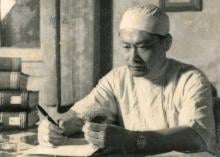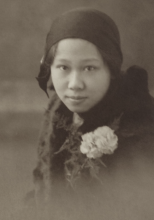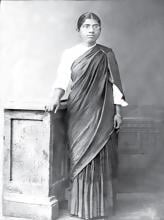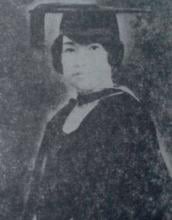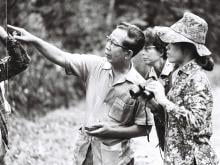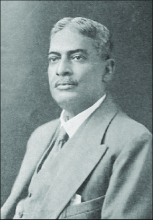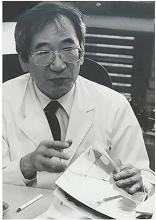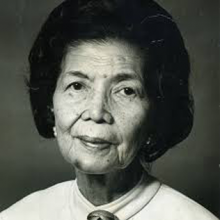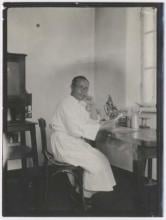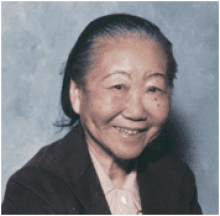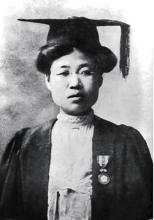Medicine
News

22 Apr 2007
Summaries of newsworthy papers that will be published online on 22 April 2007 in Nature and Nature Research Journals, including: Enzyme curtails allergic reaction to chitin, Magnetic imaging enters the nanoworld, Catalysts under the microscope, The immune system and susceptibility to cancer, Engineering diverse sets of drug sensitive proteins.

19 Apr 2007
Pioneering neuroscientists from Japan and UK will present their latest research in London on April 27th. Keio University scientists will discuss their work in brain damage repair, the birth of new adult cells, aquaporin and their implications for spinal cord injuries, Alzheimer's disease and mental disorders and much more. Admission is free.

18 Apr 2007
Summaries of newsworthy papers include Geology: The big melts and Fossils: Tell it to the trees

15 Apr 2007
Genetic susceptibility to Crohn disease, Mutation leads to male infertility, Astrocytes kill neurons in ALS, Increasing bad cholesterol levels

15 Apr 2007
TEN QUESTIONS SCIENCE CAN’T ANSWER (YET), PLEASURABLE KINGDOM ▪ SEX, DRUGS AND DNA ▪ LONESOME GEORGE

11 Apr 2007
Summaries of newsworthy papers include Cancer: Genes linked to chemotherapy response, Smart materials: A light touch, Photochemistry: Quantum tricks in photosynthesis and finally… Punish the rich

08 Apr 2007
Amplification of oestrogen receptor gene in breast cancer, Natural genetic variant influencing rice grain weight, Stabilization contra retardation, How one’s own DNA can cause autoimmunity, Enrichment of metabolites with chemical probes

04 Apr 2007
Summaries of newsworthy papers include Winds of change, Antibiotic-resistant bacteria meet their match?, Geomagnetic data captured in crystals, A salty solution, The great electron escape and Algorithm for group success?

01 Apr 2007
Fibre circuits for electronic fabrics, From A and B to O: Towards universal red blood cells, Prostate cancer risk variants and Autoantibody production by perturbed B cells

28 Mar 2007
Dying cancer patients are buying a chemical called dichloroacetate (DCA) and using it to treat themselves, despite the fact that it hasn’t been approved for use in humans.

26 Mar 2007
Researchers have discovered a pair of twins who are identical through their mother’s side, but share only half their genes on their father’s, reports a News Exclusive from [email protected].

25 Mar 2007
Summaries of newsworthy papers published in Nature Journals online on 25 March 2007 including: Too much of a good thing?, Protein sensing in full colour, Next-generation glass, The shape of drugs to come, Genetic variant associated with susceptibility to osteoarthritis, Brain cells seen in context.

21 Mar 2007
Materials: Brute force yields new molecules, Neuroscience: Emotion and moral judgements, Earth sciences: Ocean crust formation, Geology: The driving force of plate tectonics, Organic chemistry: Unprotected complexity, Evolutionary ecology: Understanding evolutionary bursts

21 Mar 2007
Teen smokers who were also exposed to nicotine before birth show a dramatic reduction in attention capacities related to vision and hearing. The study also demonstrates that male and female attention capacities are affected by the exposure in different ways.

19 Mar 2007
Keio University’s Center for Research Promotion held a symposium entitled “Toward Rapid Medical Applications of Basic Research in the Life Sciences, the panel discussion focused on what should be done by the government, academia, and industry to make translational research an entrenched part of the nation.

18 Mar 2007
Summaries of newsworthy papers in Nature journals online on 18 March 2007 including Understanding cancer spread, Spawn of hag, and Reversing the magnetic vortex core.

13 Mar 2007
Scientists have identified unforeseen mechanisms by which quinolones - a family of broad-spectrum antibiotics among the most widely prescribed - induce bacterial cell death. The study is published online this week in Molecular Systems Biology.

12 Mar 2007
A possible mechanism for green tea’s anticancer activities is reported online this week in Laboratory Investigation. The reported effect of green tea extract on lung cancer cells supports the increasing evidence of green tea’s anticancer properties.

11 Mar 2007
Summary of newsworthy papers appearing in Nature Journals on 11 March 2007: Seeing antigen-presenting cells in action, Multiferroics as the ultimate memory? How stress causes anxiety in adolescent mice, Bacteria-mediated immune system paralysis, Jumonji family removing the mark & A cheap alternative for large scale RNA interference screens.

11 Mar 2007
The parasite that leads to sleeping sickness can be lulled to sleep itself using a newly discovered pathway, according to research published online this week in EMBO reports. Trypanosoma brucei is a parasite that causes sleeping sickness resulting in neurological damage and death.

09 Mar 2007
IBN’s Nano-Bio Kits help teachers show the latest applications in bioengineering and nanotechnology through interactive experiments

07 Mar 2007
Hugo W. Moser and colleagues discuss recent clinical trial data indicating that Lorenzo’s Oil - the discovery of which was the subject of the 1992 film of the same name - can delay the onset of X-ALD symptoms.

07 Mar 2007
Commentary: Trial and distribution, Hydrology: Water on Mars revisited, Materials: Silica to silicon, Evolution: Small genome paved the way for flight?, Plant biology: Size matters, Planetary science: Sun makes an asteroid spin faster

06 Mar 2007
ICARDA and its partners in Afghanistan are promoting mint and mint products as a profitable alternative to cultivation of opium poppies. Research focuses on mint production technologies, processing methods, value addition, training, and development of markets and trade capacity – and mint cultivation is expanding rapidly.

04 Mar 2007
Summaries of newsworthy papers include Genomic marker for lung cancer, A natural barrier to HIV transmission, Mitochondrial point mutations do not limit lifespan, New immune cell exit strategy

28 Feb 2007
Summaries of newsworthy papers include Microscopy: Microscopes offer chemical ID, Immunology: Silkworm virus sussed, Developmental biology: Skin deep, Materials: How flat can flat get?, Organization in the zebrafish spinal cord

28 Feb 2007
A research group headed by Takashi Tsuji of the Tissue Engineering Research Center has developed a new cell manipulation technology whereby organ germs are artificially recombined from single cells. This technology has the potential for application to artificial "tooth regeneration" and "hair regeneration".

27 Feb 2007
The response to drug combinations critically depends on how their biological targets are connected, according to a study published online in Molecular Systems Biology this week. Understanding how multi-drug combinations work is vital in medicine, in order to rationalize their use and discover novel targets.

25 Feb 2007
Making a splash, or not, Ballistic breakthrough, NanoBuds are here, Genetic variant associated with triglyceride levels, Genetic variant protects against four infectious diseases, Potential therapeutic target in Down syndrome

21 Feb 2007
Summaries of other newsworthy papers include Glaciology: Subglacial lakes discovered in East Antarctica, Insight: Getting under the skin, Chemistry: Halogen soup, Palaeoceanography: Feedback mechanisms on climate change and Animal behaviour: Planning ahead
Researchers
Sorry, no researchers coming up for this topic.
- « first
- ‹ previous
- 1
- 2
- 3
- 4
Giants in history
Vietnamese surgeon Tôn Thất Tùng (10 May 1912 – 7 May 1982) developed a pioneering technique that reduced the risks and mortality rate of liver operations.
Michiaki Takahashi (17 February 1928 – 16 December 2013) was a Japanese virologist who developed the first chickenpox vaccine.
Irene Ayako Uchida’s (8 April 1917 – 30 July 2013) strides to understand genetic diseases such as Down syndrome paved the way for early screening of chromosomal abnormalities in foetuses.
Baron Kitasato Shibasaburo (29 January 1856 – 13 June 1931) was a Japanese physician and bacteriologist whose work led to a new understanding of preventing and treating tetanus, diphtheria and anthrax.
Maggie Lim (5 January 1913 – November 1995) was a Singaporean physician who promoted family planning and expanded the access to clinics to improve the quality of life for mothers and children in Singapore’s early days.
By isolating soil microorganisms and studying the compounds they produce, Satoshi Omura (born 1935) discovered almost 500 organic compounds with unique properties that were produced by these microorganisms, including many new antibiotics.
The founder of the Adyar Cancer Institute in India, Muthulakshmi Reddy (30 July 1886 – 22 July 1968), fought to uplift women and girls from impoverished situations.
Chinese-American virologist and molecular biologist Flossie Wong-Staal (27 August 1946 – 8 July 2020) was the first scientist to clone HIV and determine the function of its genes.
Maharani Chakravorty (1937 – 2015) was one of India’s earliest molecular biologists whose research paved the way for advances in the treatment of bacterial and viral infections.
Archana Sharma (16 February 1932 - 14 January 2008) conducted research into plant and human genetics that expanded the understanding of both botany and human health. In relation to botany, she uncovered the means by which asexually-reproducing plants evolve into new species.
The first Thai woman to receive a degree in medicine, Margaret Lin Xavier (29 May 1898 – 6 December 1932), is best remembered for her compassion towards her less privileged patients.
In 1915, pathologist Katsusaburo Yamagiwa and his research assistant Koichi Ichikawa became the first to prove that chronic exposure to chemicals can cause cancer.
In 1915, Koichi Ichikawa along with pathologist Katsusaburo Yamagiwa became the first to prove that chronic exposure to chemicals can cause cancer.
Husband and wife team, Kimishige (3 December 1925 – 6 July 2018) and Teruko Ishizaka (28 September 1926 – 4 June 2019) discovered the antibody class Immunoglobulin E (IgE) that triggers allergic reactions. They also discovered that IgE antibodies attach to white blood cells, known as mast cells, releasing histamine, which causes allergic reactions.
Husband and wife team, Kimishige (3 December 1925 – 6 July 2018) and Teruko Ishizaka (28 September 1926 – 4 June 2019) discovered the antibody class Immunoglobulin E (IgE) that triggers allergic reactions. They also discovered that IgE antibodies attach to white blood cells, known as mast cells, releasing histamine, which causes allergic reactions.
Japanese chemist Takamine Jokichi (3 November 1854 – 22 July 1922) founded the Tokyo Artificial Fertilizer Company, where he isolated a starch-digesting enzyme (named takadiastase) from the fungus Aspergillus oryzae.
Ground-breaking cancer researcher Kamal Jayasing Ranadive (8 November 1917 – 11 April 2001) advanced the understanding of the causes of leukaemia, breast cancer and oesophageal cancer through the use of animal models. She was also among the first to recognise how susceptibility to cancer is linked to tumour-causing interactions between hormones and viruses.
The research of Filipino pharmaceutical chemist Luz Oliveros-Belardo (3 November 1906 – 12 December 1999) focussed on essential oils and other chemicals derived from native Philippine plants.
Thai physician and conservationist Boonsong Lekagul (1907 – 1992) made major contributions to the preservation of his country’s wildlife.
Indian scientist and physician Upendranath Brahmachari (19 December 1873–6 February 1946) is best known for creating a drug called Urea Stibamine, used to safely and reliably treat visceral leishmaniasis (or Kala-azar), a severe infection caused by the Leishmania parasite.
Filipino chemist and pharmacist Manuel A. Zamora (29 March 1870 – 9 July 1929) is best remembered for his discovery of the tiki-tiki formula to combat beriberi, a disease caused by Vitamin B1 deficiency.
Korean parasitologist Seung-Yull Cho (16 November 1943 – 27 January 2019) is remembered largely for his pioneering works to control infections caused by helminthic parasites and his contribution to journal publishing.
Fe Villanueva del Mundo (27 November 1911 – 6 August 2011) was a Filipina paediatrician who founded the Philippines’ first paediatric hospital.
After witnessing death and suffering as a youth in his home village during World War II, Nguyễn Tài Thu (6 April 1931 – 14 February 2021) set his sights on alleviating pain by becoming a doctor. After studying Traditional Chinese Medicine in China in the 1950s, Thu returned to Vietnam to serve in military hospitals. Eventually, he became the country’s foremost practitioner of acupuncture, a technique he first learned by inserting needles into himself.
Minoru Shirota (April 23, 1899 – March 10, 1982) was a Japanese microbiologist who invented the popular fermented drink Yakult.
Wu Lien-teh (10 March 1879 – 21 January 1960) was a Malaysian-born doctor who invented a mask that effectively suppressed disease transmission. Winning the prestigious Queen’s Scholarship enabled Wu to become the first Chinese student to study medicine at the University of Cambridge.
David T. Wong (born 1936) is a Hong Kong-born American neuroscientist who is best known for discovering the antidepressant drug fluoxetine, better known as Prozac.
Indian organic chemist Asima Chatterjee (1917 to 2006) studied the medicinal properties of plant products, especially compounds known as vinca alkaloids.
Chika Kuroda (24 March 1884 – 8 November 1968) was a Japanese chemist whose research focussed on the structures of natural pigments.
Umetaro Suzuki (7 April 1874 – 20 September 1943) was a Japanese scientist best remembered for his research on beriberi, a disease caused by vitamin B1 deficiency, characterized by limb stiffness, paralysis and pain.
Salimuzzaman Siddiqui (19 October 1897 – 14 April 1994) was an artist and chemist from Pakistan whose research focused on natural products from plants.
Barry Paw (29 August 1962 – 28 December 2017) was a biologist and oncologist who discovered several novel genes and their functions in red blood cells.
Syed Qasim Mehdi (13 February 1941 – 28 September 2016) was a Pakistani molecular biologist who was a founding member of the Human Genome Diversity Project (HGDP), which assessed human diversity by studying human migration, mutation rates, relationships between different populations, genes involved in height and selective pressure.
Tsai-Fan Yu (1911 – 2 March 2007) was a Chinese-American physician and researcher who was the first female full professor at Mount Sinai School of Medicine. She discovered that gout, a condition characterized by the painful inflammation of joints, was caused by elevated levels of uric acid in the bloodstream.
Min Chueh Chang (10 October 1908 – 5 June 1991) was a Chinese-American biologist who studied fertilization in mammalian reproduction.
A Japanese surgeon, Tetsuzo Akutsu (20 August 1922 – 9 August 2007) built the first artificial heart capable of keeping an animal alive.
Ogino Ginko (3 March 1851 – 23 June 1913) was the first registered female doctor to practise modern medicine in Japan.
Esther Park (1877-1910), born Kim Jeom-dong, was the first female Korean physician to practise modern medicine in Korea and trained the first generation of Korean female doctors.


